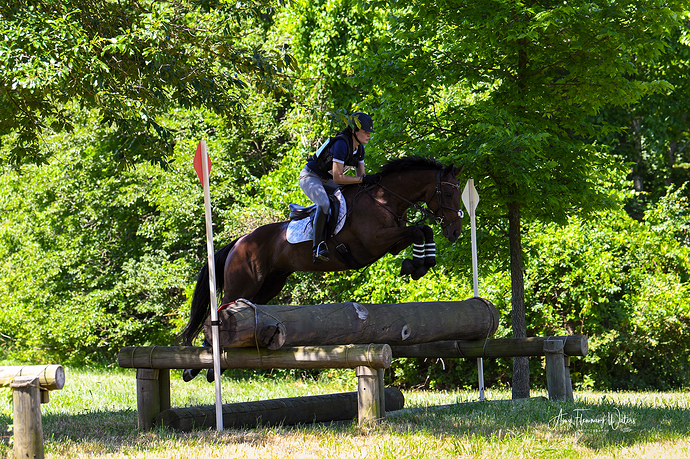Thanks for the input all!
@Beowulf, yes I too have to take photos of each fence and do lots of mental rehearsal. I will also take photos of turns and landmarks for lining up approaches. At my second Training I missed photographing one jump and got lost before that fence, which was literally the one fence that I couldn’t visualize. It was a windy course with lots of different grassy lanes and gaps in the trees, and I picked the wrong gap. Of course when I realized my mistake I announced loudly to my horse and everyone around that I was lost and an idiot. So, since then I am pretty paranoid about my mental rehearsal and being sure that I can visualize every jump and my approach to it.
It was our third run this spring after one unrecognized Mod and one recognized Mod, and those both went so darn beautifully that I was a little disappointed in this run even though the water combo and the intimidating coffin were darn near perfect.
@RAyers, I’m embarrassed to say that a post-ride course walk never even occurred to me but sounds super helpful. I will definitely do that for my next event and might see about borrowing a helmet cam too, to see if it’s useful. While I was awake in the middle of the night thinking about this, I also emailed a BNR in my area who was recommended to me as a really good instructor. I love the coach that I lesson with weekly, but should probably increase the frequency of outside perspectives now that the risk is elevating.
When I ride with a new person I always specifically tell them that I’m open to hard truths if I need to hear them, because sometimes I think people are too nice and my biggest fear is being that scary rider that everyone sees and nobody addresses. I still have never been told any hard truths, though Jimmy Wofford did call my horse “a bit of an asshole” in 2019 when I tried to show jump him in a snaffle for a clinic and had no brakes. (Now our partnership is much, much better and we go XC in a snaffle, but it took a while to get there.) I might have to put that on his tombstone someday…“Here lies Z, a bit of an asshole.” 
I also learned that there is more video of my last event than I thought. I thought my coach just videoed the water jump and next fence, which all went very well, but she also got the fences before the water that I wasn’t as happy with. The video validated my memories and feelings about how I rode. Now I just have to chat with her about the why and what I need to do differently, because I’m not as sure about that. A lot did ride well so I think I did adjust correctly as I went, but I want to adjust better and sooner next time.
Part of my self-critique problem may be some level of imposter syndrome that makes me not trust my instincts. I’ve ridden my whole life but primarily dressage (up to GP), and still feel like a newbie to eventing–which, relatively speaking, I am!







 Last time the warm-up was so stressful that I gave up and just went in. This time I’m taking a friend to set jumps for me. I swear sometimes warm-up is the most stressful part!
Last time the warm-up was so stressful that I gave up and just went in. This time I’m taking a friend to set jumps for me. I swear sometimes warm-up is the most stressful part!